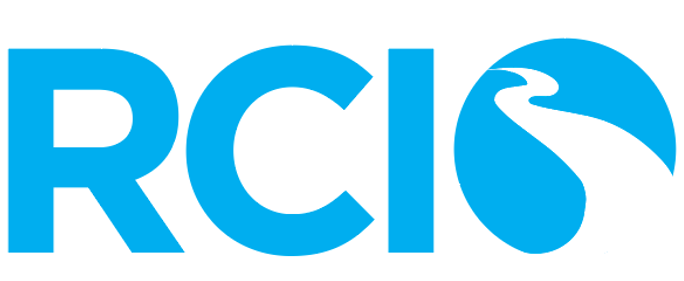Publisher
University of Tennessee at Chattanooga
Place of Publication
Chattanooga (Tenn.)
Abstract
Job seekers frequently use career websites and third-party platforms, such as Glassdoor, Indeed, or Great Places to Work, to learn about an organization’s values and culture (Smith et al., 2022). This behavior, called organizational anticipatory socialization, is the process by which individuals gather information that shapes expectations and influences employment decisions. Research indicates that organizations use their own websites to convey culture, yet little is known about how these portrayals align with employees’ actual experiences (Smith et al., 2022). Career websites are a primary tool for employer brand development, using visuals, messaging, and design consistency to shape job seekers’ perceptions of organizational culture (Cober et al., 2004; Gunesh & Maheshwari, 2019). When websites present cohesive designs, job seekers respond more positively, but inaccurate portrayals risk misrepresenting employees and weakening trust (Gunesh & Maheshwari, 2018). Despite their importance, research on the authenticity of career website messaging remains limited. This study addresses a critical gap between how organizations present values on their own career websites and how effectively these representations reflect authentic culture. Misalignment between online messaging and workplace reality can create dissatisfaction and misfit (Gunesh & Maheshwari, 2019; Human Resource Management International Digest, 2019). Experimental studies further highlight how website design and messaging significantly influence applicant perceptions (Lee et al., 2020), while person–environment fit research stresses that both objective and perceived alignment matter for decision making (Kaur & Dubey, 2014). New job seekers often turn to these sites to clarify uncertainties and gauge culture, so accuracy is crucial for aligning values and expectations (Smith et al., 2022). Accuracy is key to improving recruitment, retention, and organizational culture practices. To examine this issue, this study will be piloted with college students and faculty at a mid-size university in the Southeastern U.S. After viewing company websites, the study will ask the students to evaluate the culture. After doing so, the study will seek to compare the perceptions with those who are part of the organization as reported on third-party sites such as Glassdoor. Once the survey is piloted and validated, the study can be tested with a wider range of participants. Keywords: Organizational culture, recruitment, career websites, employer branding, talent attraction, online recruitment strategies, culture communication, organizational authenticity
Subject
Industrial and organizational psychology
Document Type
posters
Language
English
Rights
http://rightsstatements.org/vocab/InC/1.0/
License
http://creativecommons.org/licenses/by/4.0/
Included in
Authenticity in Recruitment: Assessing the Accuracy of Career Websites in Representing Organizational Cultures
Job seekers frequently use career websites and third-party platforms, such as Glassdoor, Indeed, or Great Places to Work, to learn about an organization’s values and culture (Smith et al., 2022). This behavior, called organizational anticipatory socialization, is the process by which individuals gather information that shapes expectations and influences employment decisions. Research indicates that organizations use their own websites to convey culture, yet little is known about how these portrayals align with employees’ actual experiences (Smith et al., 2022). Career websites are a primary tool for employer brand development, using visuals, messaging, and design consistency to shape job seekers’ perceptions of organizational culture (Cober et al., 2004; Gunesh & Maheshwari, 2019). When websites present cohesive designs, job seekers respond more positively, but inaccurate portrayals risk misrepresenting employees and weakening trust (Gunesh & Maheshwari, 2018). Despite their importance, research on the authenticity of career website messaging remains limited. This study addresses a critical gap between how organizations present values on their own career websites and how effectively these representations reflect authentic culture. Misalignment between online messaging and workplace reality can create dissatisfaction and misfit (Gunesh & Maheshwari, 2019; Human Resource Management International Digest, 2019). Experimental studies further highlight how website design and messaging significantly influence applicant perceptions (Lee et al., 2020), while person–environment fit research stresses that both objective and perceived alignment matter for decision making (Kaur & Dubey, 2014). New job seekers often turn to these sites to clarify uncertainties and gauge culture, so accuracy is crucial for aligning values and expectations (Smith et al., 2022). Accuracy is key to improving recruitment, retention, and organizational culture practices. To examine this issue, this study will be piloted with college students and faculty at a mid-size university in the Southeastern U.S. After viewing company websites, the study will ask the students to evaluate the culture. After doing so, the study will seek to compare the perceptions with those who are part of the organization as reported on third-party sites such as Glassdoor. Once the survey is piloted and validated, the study can be tested with a wider range of participants. Keywords: Organizational culture, recruitment, career websites, employer branding, talent attraction, online recruitment strategies, culture communication, organizational authenticity

Department
University of Tennessee at Chattanooga. Dept. of Psychology